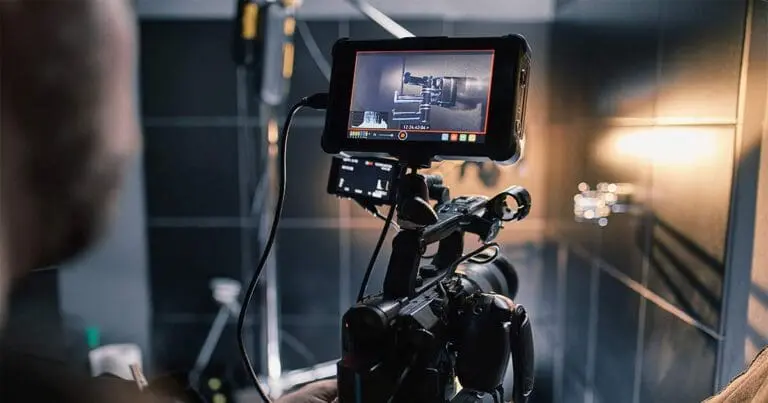Your Team Is Your Daily Environment—Create a Healthy One

Most work problems aren’t tech problems, they’re team problems.
Even with the best tech stack or streamlined processes, an unhealthy work environment can erode productivity and drive attrition.
Teams that lack trust, connection, and psychological safety rarely perform at their peak.
Why the People You Work With Matter More Than You Think
The link between engagement and performance, the real cost and ROI of company culture, and the fact that work follows you home all contribute to why the people you work with mattering more than you may think.
The Engagement & Performance Link
Teams with strong social bonds experience better employee morale, collaboration, and retention.
Google’s Project Aristotle identified psychological safety—not talent or education—as the most consistent factor among high-performing teams.
When teams feel safe, they’re more likely to learn, take creative risks, and achieve breakthrough results.
Culture’s Real Cost (and ROI)
A toxic company culture is more likely to drive people away than low pay, according to research from MIT Sloan.
By contrast, a strong culture lowers stress levels and increases sustainable performance across all levels of the organization.
Positive team dynamics boost long-term productivity while reducing hidden costs like rework, burnout, and turnover.
Work Follows You Home
Fifty-four percent of employees say work-related stress negatively affects their home life.
This highlights the critical link between work-life balance and overall employee experience.
Studies like the Harvard Adult Development Study confirm that the quality of our professional relationships impacts lifelong wellbeing, not just quarterly KPIs.
5 Steps to Build a Team You’re Excited to Lead
To build a team you’re excited to lead:
- Start With Psychological Safety
- Design for Connection
- Make Purpose & Outcomes Obvious
- Hire for Team Fit and Team Effectiveness
- De-risk & Speed Up With a Staffing Partner
1. Start With Psychological Safety
Start by normalizing mistakes as learning moments and encourage healthy dissent.
Leaders should use structured meetings and language that signal openness and appreciation for feedback.
These actions build a high-trust work environment and lay the foundation for real employee feedback.
2. Design for Connection
Strong relationships don’t form by accident which is why it’s important to design intentional moments like pair-ups, cross-functional lunches, and buddy systems.
Especially in remote work settings, planned interactions are key to sustaining team dynamics and morale.
These informal touchpoints reinforce trust and reduce social friction during collaboration.
When people feel seen and supported, employee engagement rises naturally.
3. Make Purpose & Outcomes Obvious
Clarity around roles and outcomes fuels motivation and productivity.
Employees who understand how their work contributes to bigger goals are more committed and perform better.
This clarity supports both employee recognition and stronger alignment to organizational objectives.
4. Hire for Team Fit and Team Effectiveness
Use behavioral interview questions to spot how candidates navigate feedback, team conflict, and decision-making.
Structured interviews and real-world work samples help eliminate bias and improve team fit.
Prioritizing team culture fit can reduce churn and improve employee retention from day one.
5. De-risk & Speed Up With a Staffing Partner
A trusted staffing partner gives you fast access to pre-vetted tech, digital, creative, and AI talent.
Contract-to-hire models let you test for culture and collaboration before making long-term commitments—minimizing bad-hire risk.
Top partners also pre-screen candidates for traits like humility, adaptability, and safety-building behaviors.
Avoiding just one failed hire can offset the entire cost of the partnership, especially in high-cost markets or roles.
What Great Teams Share
Great teams share qualities like psychological safety, purpose and peer connection, and inclusion and safety leading to better results.
Psychological Safety is Not Simply “Being Nice”
Psychological safety means creating space for honest conversations, learning from failure, and speaking up without fear of backlash.
It’s not about avoiding hard conversations—it’s about making candor and healthy debate part of the norm.
Teams thrive when dissent is welcome and curiosity is rewarded because this foundational element drives innovation, collaboration, and better decision-making.
Purpose & Peer Connection
Employees need more than perks—they need to feel like they belong and that their work matters.
Great managers connect daily tasks to broader organizational objectives and core values, reinforcing clarity and meaning.
Upskilling leadership to foster connection and belonging is critical, especially as employee engagement dips among managers.
Inclusion + Safety = Better Results
When teams include diverse perspectives and feel safe to contribute, performance improves measurably.
But inclusion must go hand-in-hand with psychological safety for the full benefits to be realized.
Research shows that these teams are more innovative, resilient, and better equipped to solve complex problems.
The Price of Making the Wrong Hire
The average cost to hire a new employee is around $4,700—but a poor hire can cost up to 30% of that person’s first-year salary.
For specialized or senior roles, the price is even higher when factoring in ramp-up time, employee development setbacks, and morale hits.
Total replacement costs can soar to 50–200% of salary when you account for team morale impact and lost productivity.
Getting hiring right the first time is critical to protecting your organizational development investment.
Realistic 30-Day Action Plan
Week 1: Launch a quick pulse survey with 5 questions to gauge current culture, and establish new team norms for meetings and 1:1s.
Week 2: Create two intentional connection moments, like buddy intros and a “show your work” lunch demo.
Week 3: Audit open roles to ensure interviews are structured, and add a collaborative task to the interview process.
Week 4: Pilot a staffing partner on a contract-to-hire role critical to team health, with measurable success metrics tied to employee experience and delivery.
Objections & How to Respond
“We can’t afford to slow down for culture.”
You’re already paying in employee retention issues, rework, and missed deadlines. Toxic organizational culture leads to turnover 10x more than low pay.
“Soft skills aren’t measurable.”
Track pulse surveys, employee feedback, psychological safety scores, and rework or cycle time. Positive cultures consistently show gains in productivity, lower health claims, and increased employee development outcomes.
You Control the Environment
The physical workspace matters but what matters more is how you and your people feel working in it.
That includes things like how people are treated, heard, and supported as well as providing flexibility.
Small, consistent leadership behaviors, combined with smart hiring, transform organizational culture faster than most realize.
When you choose teammates who bring out the best in each other, both the work and life outside work get better.
Looking to hire top-tier Tech, Digital Marketing, or Creative Talent? We can help.
Every year, Mondo helps to fill thousands of open positions nationwide.
More Reading…
- Hiring for Creative Thinking in a World Obsessed with Metrics
- Hiring Developers Who Actually Understand the Business
- Myths About AI Talent That Might Be Sabotaging Your Hiring
- Hiring Talent That Impacts the Bottom Line: Looking Beyond Résumés
- Interviewing 101: Why Lazy Questions = Bad Hires
- Hiring for Team Dynamics: Matching People to Workflows, Not Just Job Descriptions
- Year-End Planning: How to Set Your Q1 Hiring Strategy Up for Success
- Top 3 Seasonal Hiring Challenges and How to Overcome Them
- How to Innovate in Tech: Tools, Teams, and Trends to Watch in 2026
- Cybersecurity Awareness Month – Hiring for Cybersecurity Roles



